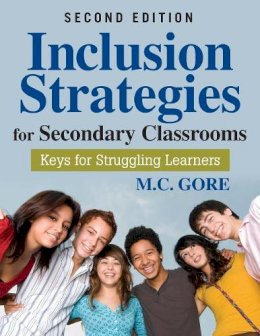
Inclusion Strategies for Secondary Classrooms
Mildred C. Gore (Ed.)
"This updated text provides a wide range of instructional tools that are cleverly introduced, well-referenced, and clearly presented. The book gives preservice teachers an informative and practical introduction as they prepare to work with older students. As an excellent refresher for practicing teachers, it offers new approaches that can be incorporated into everyday inclusive classrooms. This resource will become bookmarked and dog-eared from both initial use and subsequent reference by serious educators."
—Jean Lokerson, Faculty Emerita, School of Education
Commonwealth University
Keys for unlocking the doors to learning for ALL students!
This updated edition of the best-selling book Successful Inclusion Strategies for ... Read more identifies "locks" to learning and provides targeted strategies, or "keys," that unlock learning barriers for adolescents with disabilities and other learning challenges. Based on empirical research, this basic guide is packed with field-tested, teacher-friendly approaches that support struggling students at various stages of academic development.
Inclusion Strategies for Secondary Classrooms examines input locks (attention, perception, discrimination, and sequencing), processing/retention locks (confusion, organization, reasoning, memory), affective locks (frustration and motivation), and output locks (persistence and production), and explains why the key strategies work. This updated edition also discusses:
- What current research reveals about the unique teaching environment of secondary school classrooms
- The reauthorization of IDEA 2004
- The impact of NCLB on special education
- How the key strategies can work at all levels of a Response to Intervention program
- Expanded applications for Universal Design for Learning
Discover solutions that will help every student overcome obstacles to learning and develop the skills for academic success!
Show LessProduct Details
About Mildred C. Gore (Ed.)
Reviews for Inclusion Strategies for Secondary Classrooms
